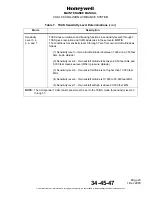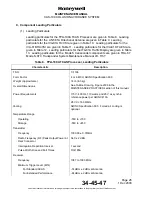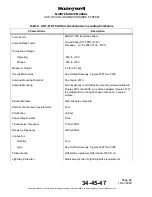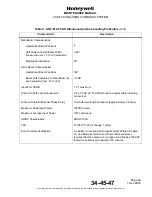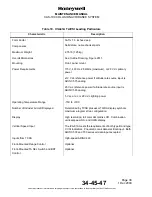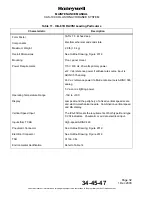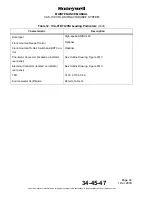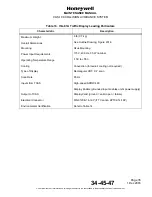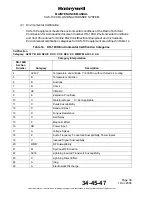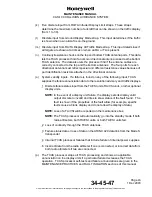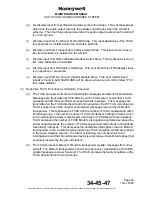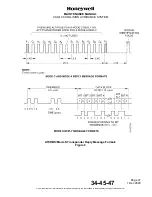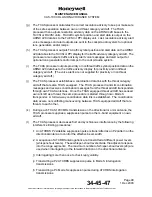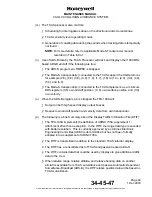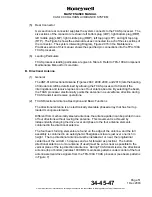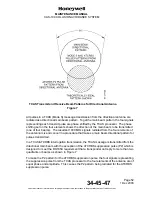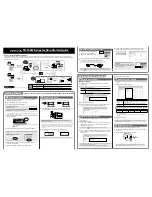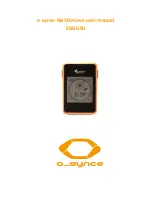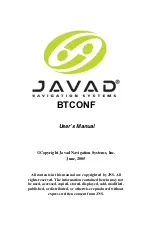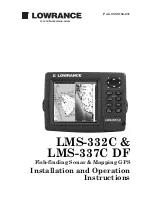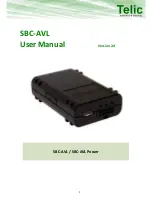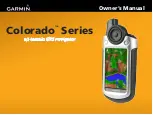
Page 37
1 Dec 2003
34-45-4
7
MAINTENANCE MANUAL
CAS-100 COLLISION AVOIDANCE SYSTEM
Use or disclosure of information on this page is subject to the restrictions in the proprietary notice of this document.
4. System Description
A. General
The Honeywell TCAS system includes the following equipment:
• TPA-100A TCAS Processor
• ANT-81A Directional Antenna
• IVA-81A/D Traffic Advisory/Vertical Speed Indicator (TA/VSI)
• IVA-81B Resolution Advisory/Vertical Speed Indicator (RA/VSI)
• Omnidirectional Antenna
• Mode S Transponder System which includes a Mode S transponder,
transponder/TCAS control unit, and two omnidirectional antennas
• Optional PPI or dedicated TCAS traffic display unit, required aircraft equipment, and
optional aircraft equipment.
NOTE:
The TPA-100A TCAS Processor is examined in this manual. Other TCAS
equipment
is examined to a level necessary for understanding total TCAS operation. Mode S
Transponder System components are included in separate manuals recorded in Table
Intro-1.
B. CAS-100 Functional Overview
The basic CAS-100 system does traffic alert and collision avoidance functions to give safe
separation between own aircraft and other aircraft equipped with Mode S transponders,
ATCRBS Mode C transponders, or ATCRBS Mode A/C transponders.
NOTE:
Mode A/C transponders are Mode A transponders that respond to Mode C
interrogations. CAS-100 operation can be separated into the these primary functions:
(1) Surveillance Function
• Detects the presence of Mode S or ATCRBS Mode A/C transponder equipped aircraft
that are in TCAS surveillance limits.
• Determines initial range, relative bearing (if detection occurs on a directional antenna),
and relative altitude (if aircraft is reporting altitude).
• Calculates closing range rate.
• Determines if the aircraft should be put in track.

